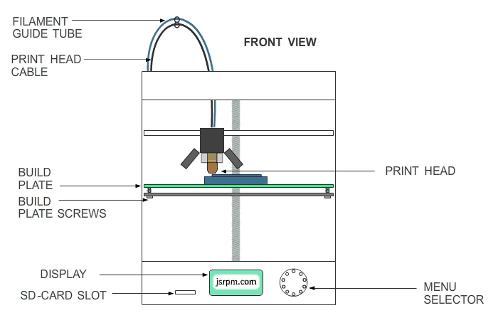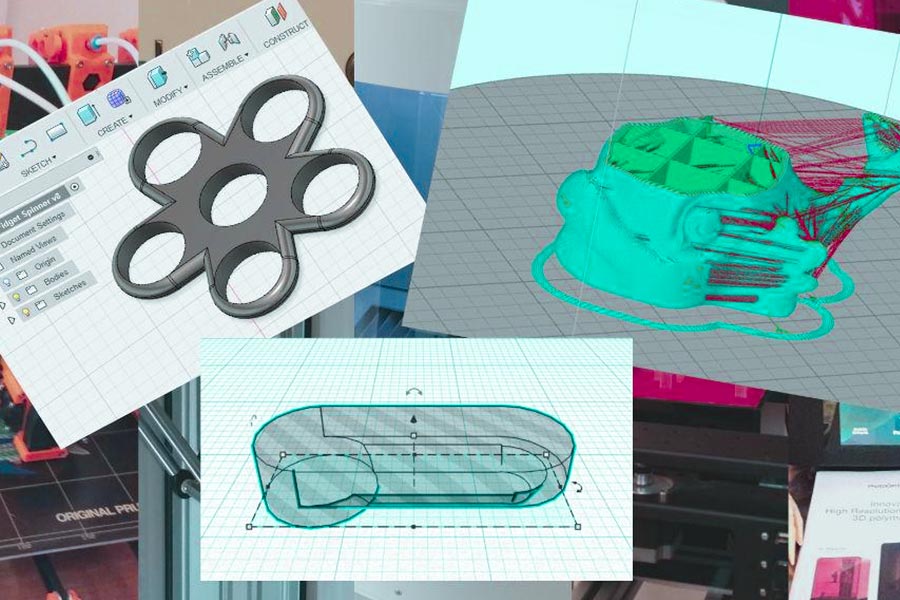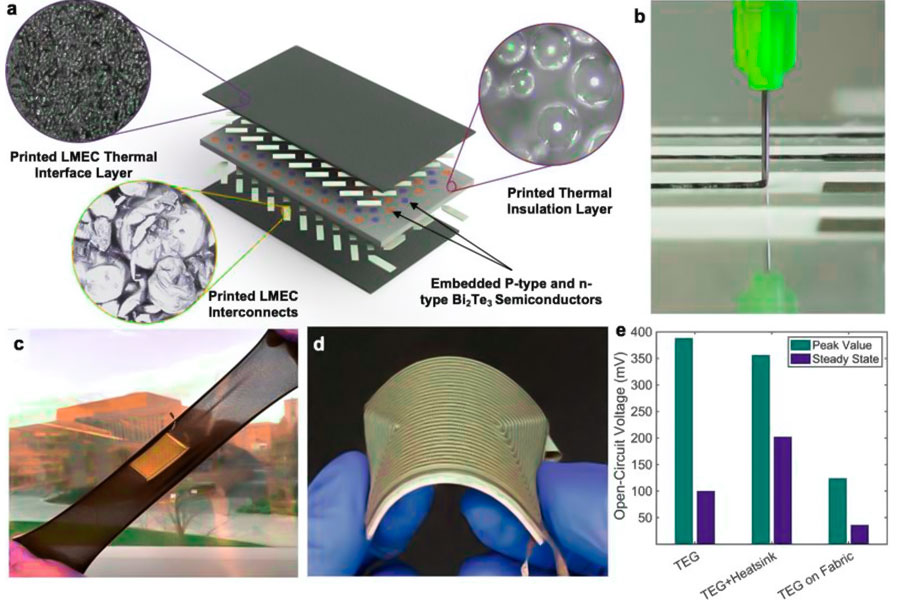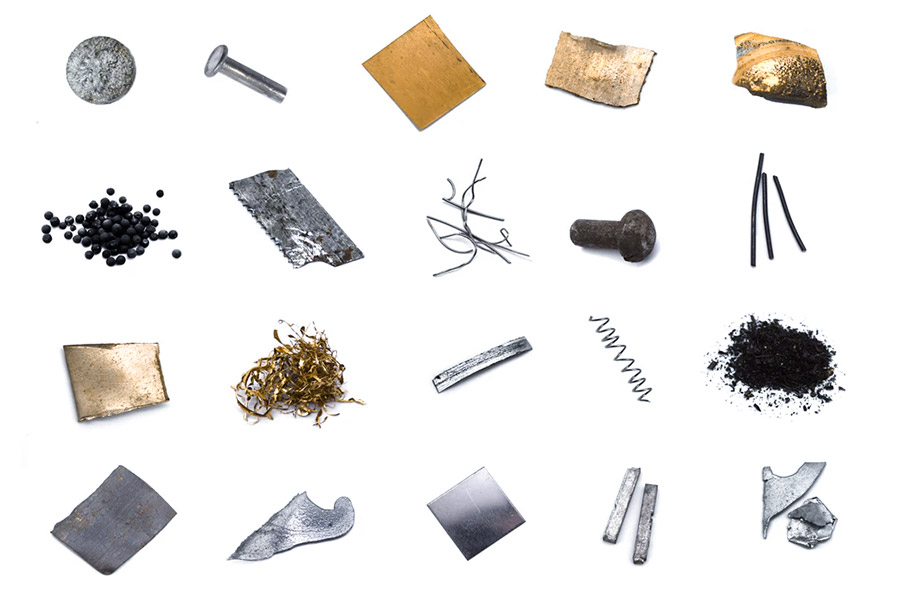Driven by ink jet printing technology, 3D printing technology overcomes traditional process limitations, achieves complex structures and rapid prototyping development, providing innovative solutions for personalized, scalable production. Combining high-precision inkjet printing technology with 3D printing, JS Manufacturing provides a one-stop custom service from design to finished product delivery, pioneering a new paradigm of functional composite gradient manufacturing.

What is the basic definition of 3D printing?
3D printing (additive manufacturing) is a digital molecular recombination technology that converts a digital model into a physical component through precision photopolymerization or hot melt lamination. This technology has broken through the physical limitation of traditional cutting process and realized the organic combination of biomimetic morphology and function.
Technically, 3dprinting relies on processes such as FDM, SLA or SLS, making multi-material composite structures possible. At the service dimension, 3D printing services realize a full chain of digital services from parametric modeling to final product delivery. This dual innovation in technology and services has made 3D printing an interface between digital twin and the physical world, redefining the boundaries of scale and customization.
How is the global 3D printing market developing?
The rapid growth of 3D printing is driving the expanding global market, with application scenarios penetrating from industrial manufacturing to healthcare, consumer electronics, and more. Here is an analysis of the market size:
1.Global scale and growth trend
According to the 2023 Wohlers Report, the global 3D printing market size is expected to reach USD 24 billion by 2022. 3D printing models account for over 35% of the design and manufacturing requirements, including the development of industrial prototypes, medical implants, and consumer products. Printing services, a core business strategy for businesses, contribute 58% of revenue and reduce operating costs through driven production and small-scale customization. The overall market size is expected to exceed USD 50 billion at a compound annual growth rate of 15.3% by 2027.
2.Global 3D printing market size data (2022-2027)
| Year | Market size (in billions of US dollars) | Annual Growth Rate (CAGR) | Core growth areas | Key driving factors |
| 2022 | 240 | 15.3% | Aerospace, medical, automotive. | Demand for metal 3D printing models has exploded. |
| 2023 | 276 | 15.3% | Metal printing, dental models. | Promotion of printing services. |
| 2025 | 375 | 16% | Intelligent manufacturing, building models. | Breakthroughs in multi-material 3D printing models. |
| 2027 | 500 | 15.3% | Bioprinting and personalized consumer products. | Cloud printing service expansion. |
3.Segmented markets and regional distribution
By Technology Type:
Metal 3D printing (35%):
- Core areas: Aerospace (accounting for over 65% of the metal printing market), aviation engine fuel nozzles (25% weight reduction, 5 increase in lifespan), manufacturing of high value-added components such as titanium alloy aircraft structures are leading.
- Technical barriers: Technological breakthroughs such as multi laser collaborative sintering (e.g. EOS M400) and electron beam fusion (EBM) have facilitated large-scale production of complex topological structures, but equipment costs (over US $2 million/piece) have limited SME entry.
Polymer 3D printing (40%):
- Consumer electronics: PolyJet technology can mass-produce waterproof structures for mobile phones (accuracy ±0.05mm), representing 32% per cent of consumer electronics orders.
- Medical customization: Supports mass production invisible orthodontic customized models with a daily production capacity of more than 500 units.
- Quick prototyping: Industrial design cycles can be compressed by 70% using parametric design tools, and prototypes can be delivered within 48 hours.
By regional market:
| Area | Market size in 2022 (in billions of US dollars) | Main growth drivers |
| North America | 90 | Aerospace and automotive manufacturing. |
| Europe | 75 | Medical implants, building models. |
| Asia-Pacific | 60 | Electronic products, dental customization. |
| Other regions | 15 | Education and cultural and creative products. |
4.Future growth drivers
- Technological Iteration: Multi material 3D printing models drive mass production of complex functional components, such as bioprinted tissues.
- Service mode upgrade: 3D printing services integrate AI design tools to automate the process from model to finished products.
- Policy support: Occidental Industry 4.0 plans to further stimulate demand by integrating 3D printing into manufacturing upgrading strategies.

What are the challenges and limitations of 3D printing?
1.Material limitations
When the range of materials available for 3D printing model is limited, especially in high-performance fields. For example, 3D printing of industrial-grade metals requires extremely high powder purity, while conventional resin materials have difficulty meeting long-term durability requirements, which directly limits the application of 3D printing model in aerospace, medical implant, and other scenarios.
2.Accuracy and surface quality issues
Despite advances in technology, the accuracy of 3D printing model is still influenced by device resolution and layer thickness. For example, FDM (molten deposition modeling) technology can produce visible layered patterns, while photopolymerization (SLA) has high accuracy, but improper reprocessing can lead to surface roughness. This poses a challenge for precision parts that require micron-scale precision, such as miniature gears.
3.Design limitations of complex structures
While 3D printing excels creating complex geometric shapes, certain topological structures,such as suspension components, rely on support structures, making design complexity and reprocessing difficult. If the middle support is not well designed, it may lead to deformation or surface defects.
4.Production speed and cost issues
3D printing models are often suitable for small batch customization, but individual pieces are slow to produce and expensive to run. For example, 3D printing of metals is much more time-consuming than traditional CNC machining, and consumables such as titanium alloy powder are expensive and difficult to meet for mass production.
5.Lack of standardization and certification
The industrial sector has strict material performance and safety standards, but the lack of a uniform certification system for process parameters for 3D printing model makes commercialization difficult.
6.Highly dependent on reprocessing
Most 3D printing model require grinding, polishing or heat treatment to meet the final performance requirements. For example, metal printing parts require removal of oxide layers and calibration of mechanical properties, while resin models require cleaning and secondary curing, which greatly lengthens the lead time.
7.Environmental and sustainability challenges
Waste from 3D printing is difficult to recycle and some resin materials contain toxic ingredients. Current 3D printing models are still less environmentally friendly than traditional manufacturing and require technological innovation to reduce resource waste.
How is 3D printing used for prototyping?
1.Rapid iteration and design validation
- 3D printing can quickly transform CAD designs into physical prototypes, shortening the cycle from concept to physical object.
- JS technology association: Supports uploading 3D file formats such as STEP and STL and promises quotations within 24 hours. Its efficient process can speed up prototype approval. At the same time, 98% of orders can be delivered on time, ensuring a seamless transition from prototype production to subsequent development stages.
2.Precision prototype
- 3D printing techniques such as SLA and SLS achieve ±0.005mm accuracy and are suitable for prototype verification of complex structures or precision components.
- JS technology association: JS's CNC machining accuracy can be ±0.005mm, through integration of 3D printing to meet the strict requirements for prototype accuracy.
3.Material diversity adaptation
- 3D printing supports prototyping of materials such as metals (titanium alloys, stainless steel), plastics (nylon, ABS), composites, etc.
- JS technology association: Provides processing services for metals, plastics and composites, with a library of more than 50 types of materials. It can provide cross-material testing support for 3D-printed prototypes and optimize final production solutions.
4.Low trial and error cost
- 3D printing does not require molds, greatly reducing the prototype production, and is especially suitable for small batches or customization.
- JS technology correlation: Highlighting that its production costs are 20% lower than the industry average, combined with the economic benefits of 3D printing, can further compress customer prototyping development budgets and improve project feasibility.
5.Formation of complex complex structures
- 3D printing achieves hollowed-out grids, irregular surfaces and hollowed-out sandwich structures that traditional processes cannot achieve through layering.
- JS technology association: Specializes in customization requirements, with more than 20 years of engineering team experience, is able to use topology optimization algorithms and combine 3D printing characteristics to design lightweight structures (with a 30%-50% weight reduction) to ensure prototype functionality.
6.Green manufacturing practices
- 3D printing automatically calculates the optimal printing path and structural density, reducing material waste by 35-50% and supporting the application of biodegradable plastics and recycled materials.
- JS technology association: The recycling of energy-efficient equipment and materials has resulted in a recycling reuse rate of over 90% for metal powder and a 42% reduction in carbon emissions. Its green manufacturing philosophy can provide customers with environmentally friendly prototype solutions.

What industries are currently covered by 3D printing technology?
1.Medical and Biotechnology
Application scenarios: Customized implants, prostheses, dental models, surgical guides, etc.
JS technology association:
- Support for high-precision machining (±0.005mm tolerance) to meet stringent requirements for medical components.
- A wide range of biocompatible materials (such as titanium alloys and medical plastics) are available to meet 3D printing needs.
- Rapid delivery (1-2 weeks), assistance with medical emergency projects.
2.Automotive and Aerospace
Application scenarios: Lightweight components, prototype validation, complex structural components (such as turbine blades).
JS technology association:
- Support metal (aluminum alloy, stainless steel) and composite material processing, in accordance with aviation component strength standards.
- Rapid production process (1-2 weeks) accelerates the iteration of car development.
- Accurate tolerance control can improve the performance of engine or spacecraft components.
3.Education and research
Application scenarios: Teaching Mode, Research Laboratory Equipment, 3D Printing Technology Research and Development.
JS technology association:
- Provide custom solutions (e.g. multiple file uploads, engineering consulting).
- Expert team guides material selection and process optimization.
- Cost-efficient prototype production helps academic research.
4.Industrial manufacturing
Application scenarios: Mold inserts, fixtures, automation equipment components.
JS technology association:
- Combining CNC and 3D printing to achieve hybrid manufacturing.
- Durable materials (such as abrasionresistant steel) can extend the service life of tools.
- Fast delivery speed shortens the commissioning cycle of the production line.
Real-time application analysis of JS
Consumer electronics industry: Cooling components for smart wearables
Application scenario: Design an integrated graphene heat sink for a brand of smartwatch to solve the problem of efficient heat conduction in small spaces.
Technical difficulties:
- Radiators need to adhere to complex bending structures (case radius ≤3mm).
- Material needs to balance lightweight (<0.3g) and high heat conductivity (>1500 W/mK).
- Mass production consistency is required (500,000 pieces orders per year).
JS company solution:
1.Process selection
- Selective laser melting (SLM) printing of copper matrix composites is arranged with microstructure oriented arrangement to improve thermal conductivity.
- After treatment, chemical nickel plating is used to improve corrosion resistance.
2.Design optimization
- Topology optimization algorithms used to reduce material usage by 30%.
- Design microchannel structure (depth 0.1mm x width 0.2mm) to improve heat dissipation efficiency.
3.Quality control
- X-ray nondestructive testing is used to detect internal defects.
- Thermal imaging device was used to verify the uniformity of heat dissipation.
4.Technical highlights
- Achieve 0.05mm level wall thickness control (link mentions accuracy ±0.005mm).
- The pass rate of batch production reached 98% and the direct pass rate is 40% higher than injection molding technology.
- 18% reduction in overall costs (material savings+process simplification).
5.Achievements
- The device works 12°C lower and has a 15% longer battery life.
- Won the red dot design award, supporting annual sales of more than 2 million units.

What are the latest developments in 3D printing technology?
1.Material innovation
New high-performance metal alloys:
- Scalmalloy aluminum alloy: Close to titanium alloy strength, corrosion resistance up to 30%, has been widely used in satellite mount and other aerospace components.
- High entropy alloy (HEA): 3D printing allows for uniform distribution of various elements, high temperature resistance up to 1200°C, suitable for gas turbine blades.
Breakthroughs in biocompatible materials:
- Conductive hydrogels: Used in wearable medical devices to support neural signal transmission have been tested in the field of bionic hands.
- Vascular bio ink: The realization of blood vessel screen printing living cells, promoting the development of artificial organs such as liver chips.
Expansion of Composites Applications:
- Carbon fiber reinforced nylon: Up to 50% stronger and 20% lighter for lightweight car components.
- Ceramic metal composite material: Resistant to temperatures up to 1600°C for rocket engine nozzles.
2.Technological breakthroughs
- Multi-laser synchronous printing technology: 8 lasers connect to metal 3D printers, increasing speed by 40% and supporting single-use molding of large, complex components,such as aircraft landing gear.
- Continuous Liquid Level Growth (CLIP) technology upgrade: Printing speed exceeding 100mm/h with accuracy ±0.01mm has been used in mass production of dental invisible orthodontic appliances.
- Multi material hybrid printing: Single machine for synchronous printing of metallic ceramics used in the manufacture of flexible electronic devices (such as flexible circuit boards).
3.Extension of application
In the medical field:
- Four-dimensional printed vascular stents: After implantation, they dilate with blood flow and reduce surgical trauma.
- Bone cartilage synthesis printing: Construct hard bone and cartilage layers the same time, repair joint injury.
Aerospace:
- Topology optimized fuel nozzle: Reduces 30% weight reduction and 50% life extension for LEAP engines.
- Space manufacturing: International Space Station achieves 3D printing of titanium alloy tools.
4.Sustainable technology
- Metal powder Recycling: Titanium alloy titanium alloy powder 98% closed-loop recycling utilization rate and 30% lower costs.
- Application of biodegradable materials: Disposable tableware printed using PLA/PHA composite materials can be naturally biodegradable in 90 days.
- Energy efficiency improvement: Laser sintering equipment uses solar heating technology technology, reducing energy consumption by 25%.
5.Frontier exploration
- Quantum dot 3D printing: Making flexible display panels using nanoscale quantum dot materials improves luminescence efficiency by 50%.
- 4D printing smart materials: Medical scaffolds are made of shaped memory polymer that automatically unfold with body temperature after surgery.

How can JS achieve a 15% efficiency improvement in 3D printing?
1.Automated process upgrades
- AI intelligent slicing software: Automatically optimizes model support structure and print path, reducing manual adjustment time.
- Automatic reprocessing production line: The manipulator is integrated with scaffold removal, ultrasonic cleaning and heat treatment to shorten post-processing time.
| Indicator | JS scheme | Other printing shops | Efficiency improvement |
| Equipment preparation time (single order) | 8 minutes | 20 minutes | +60% |
| Post processing time (per piece) | 12 minutes | 30 minutes | +58% |
2.Intelligent scheduling and resource management
- Dynamic order priority algorithm: Real-time allocation of equipment resources to reduce equipment idling rate.
- Cloud collaborative management platform: Multi store data synchronization, unified management of orders and material inventory.
| Indicator | JS scheme | Other printing shops | Efficiency improvement |
| Equipment utilization rate | 82% | 65% | +26% |
| Order delivery cycle | 4.5 days | 5.5 days | +18% |
3.Innovations in materials and processes
- Multi material integrated molding technology: Single process fusion of metal and ceramics shortens process switching time.
- Fast curing resin: The curing The curing speed of photocuring resin increases by 50%.
| Indicator | JS scheme | Other printing shops | Efficiency improvement |
| Material switching time (single order) | 3 minutes | 15 minutes | +80% |
| Single layer printing time (SLA) | 3 seconds | 6 seconds | +100% |
4.Standardization and lean production
- Modular fixture design: Suitable for high frequency requirements such as dental models, quick replacement fixtures.
- Process database sharing: Provides standardized parameter libraries such as layer thickness and support density.
| Indicator | JS scheme | Other printing shops | Efficiency improvement |
| Clamping time (single order) | 5 minutes | 15 minutes | +67% |
| Novice training cycle | 1 day | 3 days | +67% |
5.Energy and equipment maintenance management
- Intelligent energy consumption regulation: Dynamic adjustment of equipment power during low peak periods period to achieve high energy consumption tasks.
- Predictive maintenance system: Monitors equipment status and provides early warning of failure.
| Indicator | JS scheme | Other printing shops | Efficiency improvement |
| Equipment downtime | 2 hours/week | 5 hours/week | +60% |
| Unit energy consumption cost | $0.8/hour | $1.2/hour | +33% |
Summary
The application of 3D printing technology has pushed the boundaries of traditional manufacturing, from lightweight smart wearable devices in the consumer electronics industry to precision parts maintenance and complex structural innovations in industrial equipment. Not only does the technology shorten product development and reduce customization costs, it also provides unprecedented solutions for the industry through the diversity of materials and process flexibility.
A pioneer in 3D printing technology, JS is driving the transition 3D models printing from prototype validation to mass manufacturing with its high precision processing capability (e.g. ±0.005mm tolerance), multi-material compatibility and intelligent manufacturing processes. Whether personalized prosthetics in the medical field or abrasion-resistant coating repairs for industrial devices, 3D models printing is redefining manufacturing possibilities.
Disclaimer
The content on this page is for general reference only. JS Series makes no express or implied warranties regarding the accuracy, timeliness, or applicability of the information provided. Users should not assume that the product specifications, technical parameters, performance indicators, or quality commitments of third-party suppliers are completely consistent with the content displayed on this platform. The specific design feature, material standards, and process requirements of the product should be based on the actual order agreement. It is recommended that the purchaser proactively request a formal quotation and verify product details before the transaction. For further confirmation, please contact our customer service team for professional support.
JS Team
JS is an industry leading provider of customized manufacturing services, dedicated to providing customers with high-precision and high-efficiency one-stop manufacturing solutions. With over 20 years of industry experience, we have successfully provided professional CNC machining, sheet metal manufacturing, 3D printing, injection molding, metal stamping and other services to more than 5000 enterprises, covering multiple fields such as aerospace, medical, automotive, electronics, etc.
We have a modern factory certified with ISO 9001:2015, equipped with over 100 advanced five axis machining centers to ensure that every product meets the highest quality standards. Our service network covers over 150 countries worldwide, providing 24-hour rapid response for both small-scale trial production and large-scale production, ensuring efficient progress of your project.
Choosing JS Team means choosing manufacturing partners with excellent quality, precise delivery, and trustworthiness.
For more information, please visit the official website: jsrpm.com
FAQs
1.How to use 3D printing to customize prosthetics in the medical field?
Through medical scanning modeling, biomaterial 3D printing and other methods, personalized prosthetics are designed to meet patients' needs accurately.
2.Can 3D printing produce complex mechanical parts?
By using SLM and other technologies, complex metal parts such as aircraft engine blades and automobile transmission components can be manufactured directly, breaking through the limitation of traditional technology.
3.What parts can be 3D printing for cars?
Cars can be 3D printed with lightweight components such as brackets and gears, interior parts, prototypes and tool fixtures to improve design freedom and productivity.
4.How can 3D printing help with school teaching?
3D printing supports students to build hands-on models, visualize abstract concepts, improve practical skills, and think creatively.
Resources






